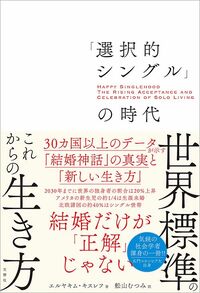イランでも女性一人あたりの出生率は14年間で4.9人減少
イラン
このような流れは中東の保守的な社会においても明らかだ。たとえば、イランでも、シングルの統計に前例のない変化があらわれている。
イランでは伝統的に結婚に関する事柄は、法的、社会的な概念だけでなく、宗教や文化に根ざした期待から強い影響を受け、早く結婚して一生添い遂げ、離婚しないことが当然だと思われていた。
しかし、ここ30年ほどの統計を見れば、イランはマクロ・ミクロ両方のレベルで大きな社会の変化を経験したことがわかる。女性一人あたりの出生率は、1986年には平均7人だったが、2000年には2.1人と劇的な減少を遂げた(※20)。
この変化の要因のひとつは、政府が避妊を奨励したことによるものだろう。だが、統計を分析すると、避妊法の知識が普及し、避妊が可能になったことは、出生率低下の原因の61%にすぎず、31%は結婚に関する行動の変化によるものとなっている(※21)。
こんにちの若いイラン人、特に女性たちは、かつてより遅い時期に結婚し、早くに子どもを産むのをやめるか、離婚するか、あるいは、まったく結婚しないという選択をしている。
アラブ諸国、イスラム諸国でもシングル増加の動きは食い止められない
アラブ首長国連邦
保守的な社会でありながら、シングルが劇的に増えているもうひとつの例は、アラブ首長国連邦だ。2014年、この国の30歳以上の女性のうち、独身者は60%を超えていた。離婚率は40%で、ほんの20年前と比べて20%も高くなっていた(※22)。
結婚の時期を遅らせる、もしくは結婚しないことを選ぶ傾向は、アラブ首長国連邦の男性たちのあいだで1980年代にすでに始まっていた。彼らはこの国で習慣となっていた高額の結納金の支払いを避けようと、外国で結婚相手を探したり、結婚せずにいたりするようになった(※23)。
こうした現象が広まったため、政府は同国人どうしの結婚を奨励するために基金を設立した。今では、国内の女性と結婚する男性は助成金を受けることができ、さらに子どもがひとり生まれるたびに補助金を受けとることが可能だ。
政府はまた、結婚相手探しや披露宴のためにも、資金を投入している。アラブ首長国連邦政府の公式サイトにはこうある。
アラブ首長国連邦政府は、安定した、強固な首長国連邦の家族を築き、維持し、首長国連邦の社会的、人口統計的構造を強化するため、男性が同国の女性と結婚することを奨励しています。
このため、アラブ首長国連邦は1992年の連邦法第47号にもとづき、「結婚基金」を創設しました。これは、アラブ首長国連邦の故シェイク・ザーイド・ビン・スルターン・アール・ナヒヤーン初代大統領の社会政策を補完し、統合するものです。
「結婚基金」に加えて、各首長国に以下のサービスを提供する事業体を設けています。結婚相手探しや披露宴のために、コミュニティーセンターやマジュリスの会場を提供、結婚前・結婚後のカウンセリング……(※24)。
本プログラムが始まって最初の10年間に3万2000家族が助成金の恩恵を受けたが、結婚に関する統計を見ると、この法律制定はシングルの増加を食い止めることはできなかったようだ。
実際、シングルの増加は、中東、アフリカ北部のアラブ諸国、イスラム諸国でも広がっており、バーレーン、サウジアラビア、カタールではアラブ首長国連邦の結婚基金に類似したプロジェクトや戦略があるものの、シングル増加の動きを食い止めることはやはりできていない(※25)。
※1. Xiaqing Zhao and Hooi Lai Wan, “Drivers of Online Purchase Intention on Singles’ Day: A Study of Chinese Consumers,” International Journal of Electronic Marketing and Retailing 8, no. 1 (2017): 1-20.
※2. Tiffany Hsu, “Alibaba’s Singles Day Sales Hit New Record of $25.3 Billion,” New York Times , November 10,2017.
※3. Singular Magazine , “National Singles Day Returns to West Hollywood,” January 1, 2016.
※4. Zhongwei Zhao and Wei Chen, “Changes in Household Formation and Composition in China since the Midtwentieth Century,” Journal of Population Research 25, no. 3 (2008): 267-86.
※5. Wei-Jun Jean Yeung and Adam Ka-Lok Cheung, “Living Alone: One Person Households in Asia,” Demographic Research 32, no. 40 (2015): 1099-112.
※6. Euromonitor, Downsizing Globally: The Impact of Changing Household Structure on Global Consumer Markets (London: Euromonitor International, 2013).
※7. Eric Klinenberg, Going Solo: The Extraordinary Rise and Surprising Appeal of Living Alone (New York:Penguin, 2012)[ 『シングルトン ひとりで生きる!』エリック・クライネンバーグ著, 白川貴子訳, 鳥影社, 2014年].
※8. Wendy Wang and Kim C. Parker, Record Share of Americans Have Never Married: As Values, Economics and Gender Patterns Change (Washington, DC: Pew Research Center, 2014).
※9. Pew Research Center, Parenting in America: Outlook, Worries, Aspirations Are Strongly Linked to Financial Situation (Washington, DC: Pew Research Center, 2015).
※10. 第15回出生動向基本調査(結婚と出産に関する全国調査)(国立社会保障・人口問題研究所、2017).
※11. Roslyn Appleby, “Singleness, Marriage, and the Construction of Heterosexual Masculinities: Australian Men Teaching English in Japan,” portal: Journal of Multidisciplinary International Studies 10, no. 1 (2013): 1-21;Masahiro Morioka, “A Phenomenological Study of ‘Herbivore Men,’” Review of Life Studies 4 (2013): 1-20; James E. Roberson and Nobue Suzuki, eds., Men and Masculinities in Contemporary Japan: Dislocating the Salaryman Doxa (London: Routledge, 2005).
※12. Masahiro Morioka, “A Phenomenological Study of ‘Herbivore Men,’” Review of Life Studies 4 (2013): 1-20.
※13. Alexandra Harney, “The Herbivore’s Dilemma,” Slate , June 2009.
※14. Kathleen Kiernan, “Unmarried Cohabitation and Parenthood in Britain and Europe,” Law & Policy 26, no. 1(2004): 33-55.
※15. Peter J. Stein, “Singlehood: An Alternative to Marriage,” Family Coordinator 24, no. 4 (1975): 489-503.
※16. Gary R. Lee and Krista K. Payne, “Changing Marriage Patterns since 1970: What’s Going On, and Why?” Journal of Comparative Family Studies 41, no. 4 (2010): 537-55.
※17. Census of India, Houselisting and Housing Census Data (New Delhi: Government of India, Ministry of Home Affairs, 2011); Premchand Dommaraju, “One-Person Households in India,” Demographic Research 32, no. 45 (2015); Hyunjoon Park and Jaesung Choi, “Long-Term Trends in Living Alone among Korean Adults:Age, Gender, and Educational Differences,” Demographic Research 32, no. 43 (2015): 1177-208; Christophe Guilmoto and Myriam de Loenzien, “Emerging, Transitory or Residual? One-Person Households in Viet Nam,” Demographic Research 32, no. 42 (2015): 1147-76; Chai Podhisita and Peter Xenos, “Living Alone in South and Southeast Asia: An Analysis of Census Data,” Demographic Research 32, no. 41 (2015): 1113-46; Hyunjoon Park and Jaesung Choi, “Long-Term Trends in Living Alone among Korean Adults: Age, Gender,and Educational Differences,” Demographic Research 32, no. 43 (2015): 1177-208.
※18. Shelley Budgeon, “Couple Culture and the Production of Singleness,” Sexualities 11, no. 3 (2008): 301-25;Euromonitor, Downsizing Globally: The Impact of Changing Household Structure on Global Consumer Markets (London: Euromonitor International, 2013).
※19. Euromonitor, Single Living: How Atomisation-the Rise of Singles and OnePerson Households-Is Affecting Consumer Purchasing Habits (London: Euromonitor International, 2008).
※20. Mohammad Jalal Abbasi-Shavazi, Peter McDonald, and Meimanat Hossein Chavoshi, Changes in Family,Fertility Behavior and Attitudes in Iran (Canberra, Australia: Demography and Sociology Program, Research School of Social Sciences, 2003).
※21. Amir Erfani and Kevin McQuillan, “Rapid Fertility Decline in Iran: Analysis of Intermediate Variables,” Journal of Biosocial Science 40, no. 3 (2008): 459-78.
※22. UAE Interact, Marriage Fund Report (Abu Dhabi, United Arab Emirates: Ministry of Information and Culture,2015).
※23. Hoda Rashad, Magued Osman, and Farzaneh Roudi-Fahimi, Marriage in the Arab World (Washington, DC:Population Reference Bureau, 2005).
※24. Government, United Arab Emirates, Marriage Fund Report (Abu Dhabi, United Arab Emirates: Ministry of Information and Culture, 2017), http://beta.government.ae/en/information-and-services/social-affairs/marriage.
※25. Hoda Rashad, Magued Osman, and Farzaneh Roudi-Fahimi, Marriage in the Arab World (Washington, DC: Population Reference Bureau, 2005); Paul Puschmann and Koen Matthijs, “The Demographic Transition in the Arab World: The Dual Role of Marriage in Family Dynamics and Population Growth,” in Population Change in Europe, the Middle-East and North Africa: Beyond the Demographic Divide, ed. Koenraad Matthijs, Karel Neels, Christiane Timmerman, Jacques Haers, and Sara Mels (New York: Routledge, 2016), 119.
イスラエル・ヘブライ大学の公共政策・政府学部で教鞭を執る。マイノリティー、社会政策、シングル研究が専門。米国・コロンビア大学で社会学の博士号を取得したほか、カウンセリング、公共政策、社会学の3つの修士号を有する。リーダーシップ、移住、社会・教育政策、エスニック・マイノリティー、グループ・セラピー、シングルなどのテーマで、多くの記事・書籍を執筆・編纂している。

















